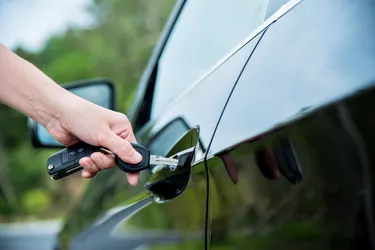
Gap insurance coverage is associated with a specific auto loan and is designed to cover a newly purchased vehicle in the event of an accident where the car is determined to be a total loss. It can't be transferred or reassigned to another loan, even one that covers the same vehicle. When you refinance, your loan is paid off, and your gap coverage ends. If you want to maintain gap insurance on your car, you'll need to purchase a new policy.
How Gap Insurance Works
Video of the Day
As the name implies, gap insurance covers the difference between the amount you owe on the loan and the cash value of your car. If there's an accident that totals your vehicle, your insurance provider only pays the value of the car at the time, which can be less than the amount remaining on your loan. With gap insurance, the insurance company pays the difference so you don't have to worry about it.
Video of the Day
Although you can estimate the value of your car using the Kelley Blue Book or NADA Guides, insurance companies use an actual cash value calculator, which isn't available to the public. In most cases, gap insurance is optional, but can give the policyholder a piece of mind that the car will be fully covered in the event of an accident. However, unless it's a requirement in your loan agreement or contract, the dealer or lender can't force you to carry gap coverage on the vehicle.
Refunds After Cancellation
Since gap insurance normally is paid in advance, you may be entitled to a prorated refund of the unused portion after you've cancelled the policy during the refinance, so be sure to check your policy in its entirety. Although the coverage ends when the loan is paid off, contact the gap insurance company directly to fill out any necessary cancellation paperwork and request a refund for any coverage that you did not need or use.
Adding Gap Insurance
When you refinance, the interest rate and length of the loan can change. Ask your auto insurance company what they'll pay if the car is declared a total loss. If that amount is less than you owe, consider adding gap coverage to the new loan to protect the car in the event that it is totaled in an accident.
If the gap doesn't seem as significant now as it once did, you may decide the coverage isn't worth the cost. When refinancing late in the loan, gap coverage is a waste of money since you typically aren't upside down on a new car loan after about three years.
The length of time you have to add gap insurance coverage varies based on the policy issuer, but you'll generally have up to 12 months after you purchase the car. Although gap insurance can be purchased at the dealer, lower rates typically are available when you add it on to your existing insurance policy. Do a little comparison shopping; you also can purchase gap coverage through a separate insurance company if you find one offering it for less.